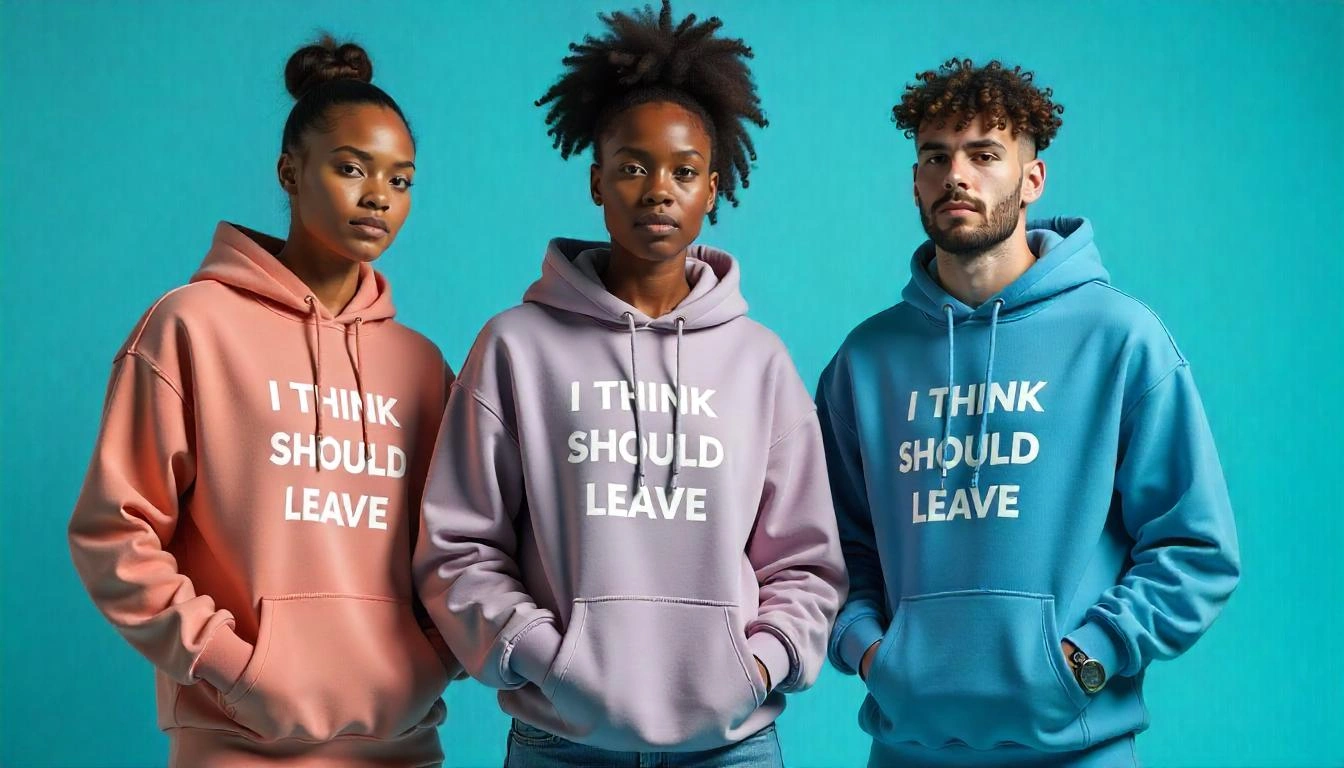In a cultural landscape where irony has become both armor and aesthetic, it makes perfect sense that I Think You Should Leave Merch—Tom Robinson’s offbeat sketch comedy series—has evolved into more than just a cult favorite. It’s a fashion phenomenon.
Once just a collection of deeply absurd bits about hot dog suits, haunted houses, and cursed t-shirts, the show has quietly (and then not-so-quietly) become a defining influence in niche fashion circles. Streetwear kids, ironic normcore adherents, and anti-fashion tastemakers alike have embraced the merch not merely as fan gear, but as fashion statements—a kind of ironic armor coded in deep-cut references and knowing nods.
This isn’t just another Netflix tie-in. This is sketch-comedy couture.
The Merch That Broke the Algorithm
You don’t need to be an algorithm whisperer to understand the virality of I Think You Should Leave. Its visual language—absurd, cringe, layered in the discomfort of hyper-specific situations—has always lent itself well to memetic culture. But turning those aesthetics into clothing? That’s where things got interesting.
The show’s official merch drops, powered through platforms like Brain Dead, Little Satan, and various collabs with boutique labels, have been low-key disruptive. They feature designs that mirror the show’s universe: absurdist graphics, off-kilter slogans, and callbacks to now-iconic sketches (“I Don’t Even Want to Be Around Anymore” tees, “TC Tuggers” mock-performance fleece, and the chaotic “Coffin Flop” prints).
Each drop feels like it’s designed by someone deep in the fandom but schooled in fashion semiotics. There’s a knowingness in the design—graphics that don’t scream IP cash-in, but instead whisper subcultural fluency.
Ironic Normcore 2.0: Merch as Middle-Aged Camouflage
The brilliance of ITALY merch lies in its ability to collapse multiple aesthetics. One of the most dominant modes it channels is ironic normcore—a trend defined by the embrace (or send-up) of the mundane: dad hats, office polos, oversized khakis, and vaguely sad department-store logos.
In I Think You Should Leave, much of the humor stems from this exact tension—ordinary characters cracking under pressure, absurdities unfolding in strip mall aesthetics. The merch extends that logic. T-shirts and fleeces look like they belong in a suburban Kohl’s, but on closer inspection, they’re shot through with chaotic energy. It’s a performance of blandness, turned inside out.
Fashion-wise, this lands perfectly in today’s landscape where irony-laced nostalgia is currency. The anti-hype silhouette—boxy fits, intentionally awkward typography, washed-out color palettes—plays directly into the post-Supreme fatigue of younger consumers. Instead of shouting status, ITSY merch shrugs, rolls its eyes, and mumbles a one-liner from a sketch you either get or you don’t.
Anti-Fashion with a Punchline
Beyond normcore, there’s also a potent current of anti-fashion—clothes designed to look like they weren’t designed at all. The best ITSYL pieces flirt with the aesthetic of low effort, but are often loaded with in-jokes, design layers, and unexpected quality.
Take the “Dan Flashes” capsule—a fictional store from Season 2, mocked for its overly complex patterns and aggressively masculine energy. Real-life versions of these shirts have become staples in the wardrobes of those who orbit the anti-fashion sphere. They’re gaudy on purpose, tacky with intent—shirts that parody maximalism while still actually looking good with a pair of wide-leg trousers and vintage sneakers.
This is where the merch blurs into real fashion commentary. Like Vetements in its early heyday, ITSY gear parodies consumer culture while fully participating in it. It’s fashion’s version of breaking the fourth wall.
From Meme to Material
Material quality wasn’t always the selling point of ironic merch, but I Think You Should Leave’s drops have started to shift that expectation. Recent collaborations have seen elevated construction: heavyweight cottons, vintage-style fades, all-over prints, and embroidery detail that goes beyond slapstick novelty.
These choices speak to a consumer base that’s growing more discerning. Streetwear isn’t just a tee and a logo anymore—it’s a blend of reference, material, and storytelling. When a hoodie looks like it came from a fictional steakhouse (The Capital Room, for instance) but feels like something out of a limited drop from Noah or Wacko Maria, you’re witnessing a new kind of fashion hybrid.
It’s the convergence of two cultures—one driven by character, the other by cloth.
Cultural Resonance: From Fan Wear to Fashion Statement
Why has I Think You Should Leave merch resonated so deeply with fashion’s alt crowd?
Partly, it’s the show’s cult appeal. Like Nathan for You, Curb Your Enthusiasm, or even Twin Peaks in a different generation, ITSY has created a world that feels insular, strange, and addictive. Wearing the merch is less about declaring fandom and more about sending signals—to others in the know, to those who speak the same absurd language.
But more importantly, it taps into something that fashion has been chasing for a decade: authenticity layered with contradiction. The best ITSYL pieces don’t look like they were made for fashion—they look like they were made for the sketch, then somehow slipped into your real-life wardrobe. That slippage is powerful.
The Fashion/Pop Culture Feedback Loop
This isn’t the first time fashion has looked to pop media for inspiration. We’ve seen Balenciaga tap The Simpsons, Loewe use Spirited Away, and countless labels remix Star Wars, SpongeBob, and The Sopranos. But I Think You Should Leave offers something different: it’s not just aesthetics, it’s ideology.
The sketches mock social norms, collapse etiquette, and destabilize power dynamics—all things fashion also does in its most provocative forms. In that way, ITSYL and fashion are kindred spirits. The merch is just the medium where they meet.
And like the best pop culture crossovers, it doesn’t feel forced. Instead, it feels like a cultural inevitability—fashion catching up to where comedy already went.
What’s Next?
With Season 4 of I Think You Should Leave on the horizon and the merch community growing ever more inventive, the aesthetic is only expanding. Independent creators are dropping bootleg designs, high-end brands are referencing bits in runway graphics, and TikTok influencers are layering ITSY fear into their daily fits with clinical precision.
Whether this wave crests into mainstream adoption or retreats back into the niche corners of alternative fashion remains to be seen. But for now, I Think You Should Leave merch isn’t just worn—it’s wielded.
Conclusion
I Think You Should Leave merch isn’t just another novelty clothing trend—it’s a case study in how pop culture, irony, and fashion intersect in the post-hype era. Its success lies in subverting expectations: it looks anti-fashion but is highly intentional, it jokes about taste while showing impeccable design instincts, and it speaks to a generation fluent in memes, discomfort, and detachment.
Also read: Still Think About You Lyrics Breakdown — When Music and Emotion Collide





